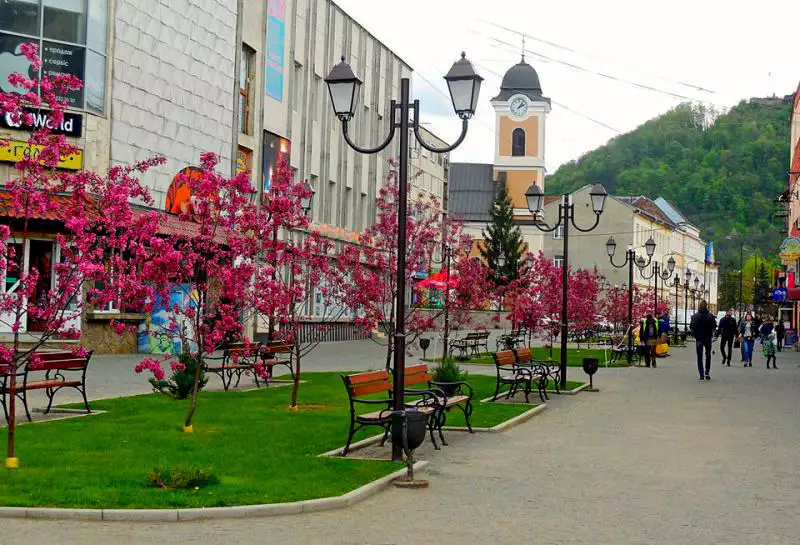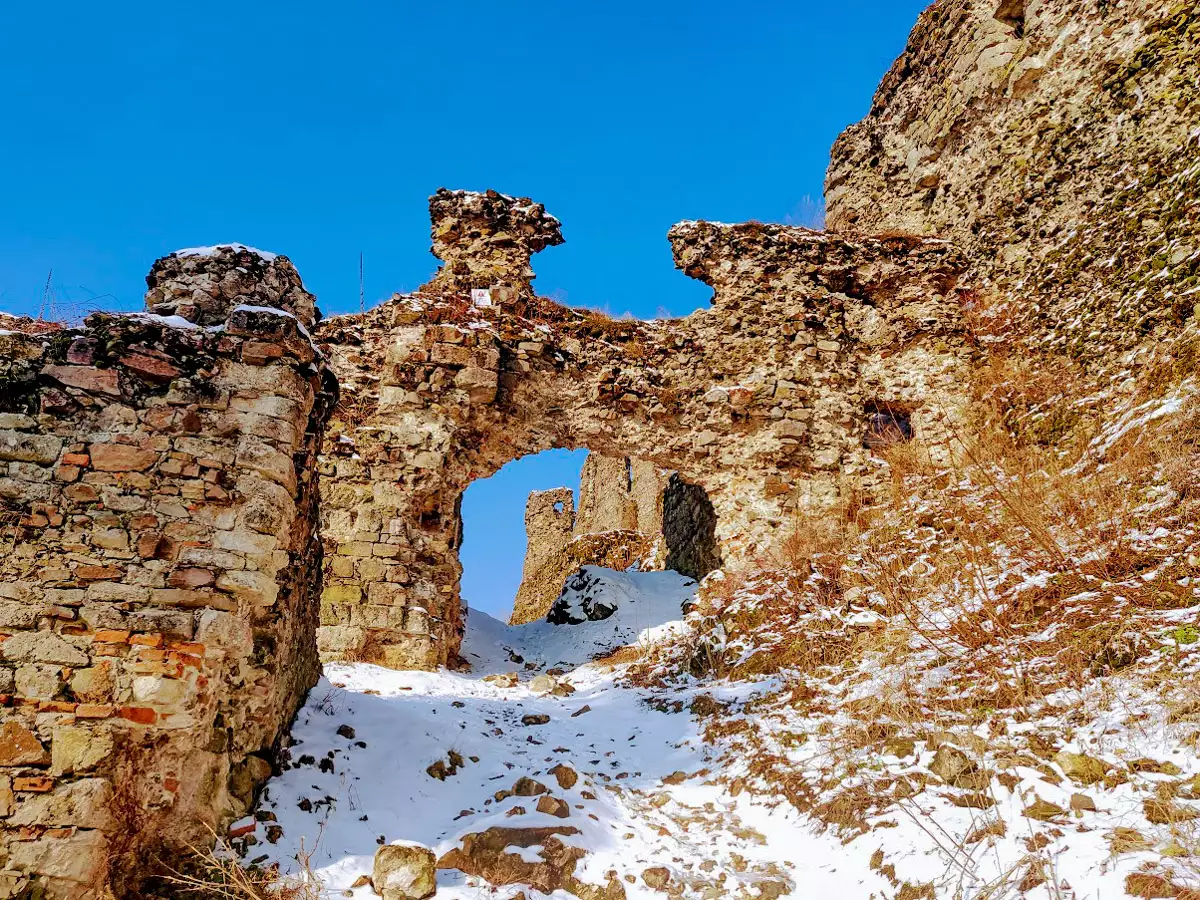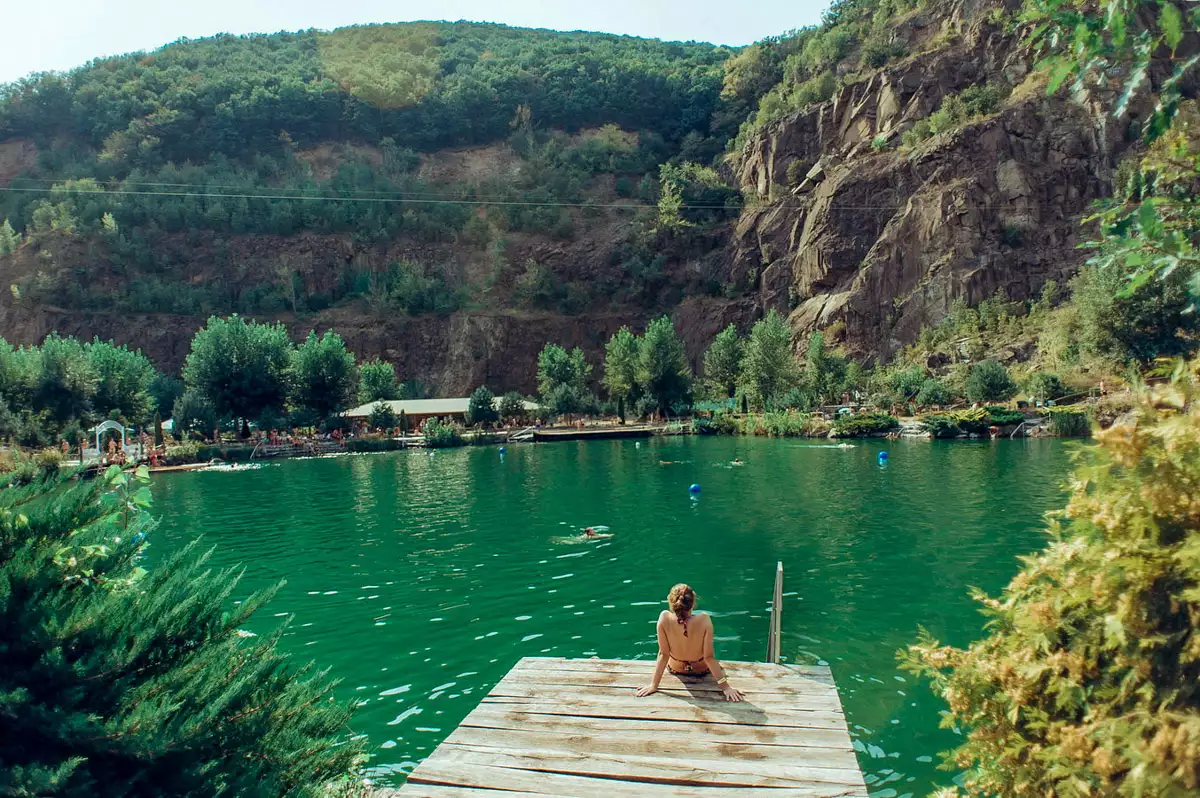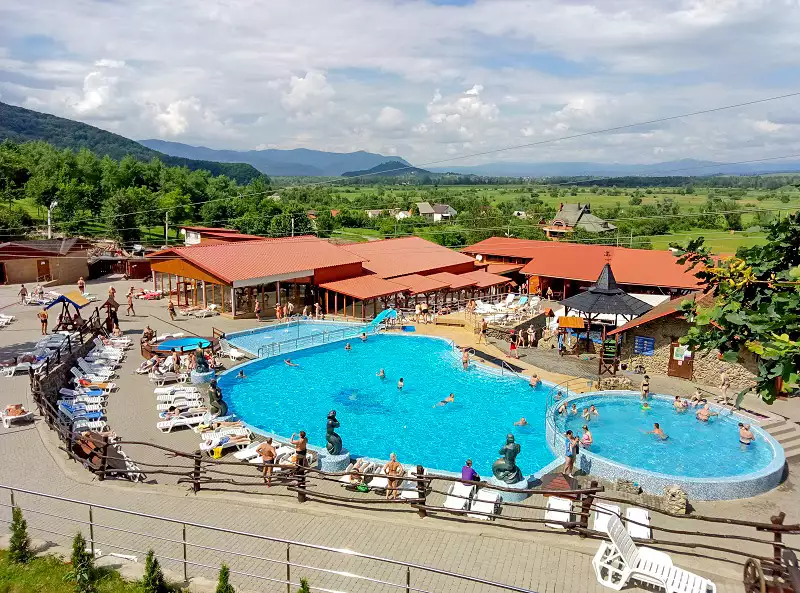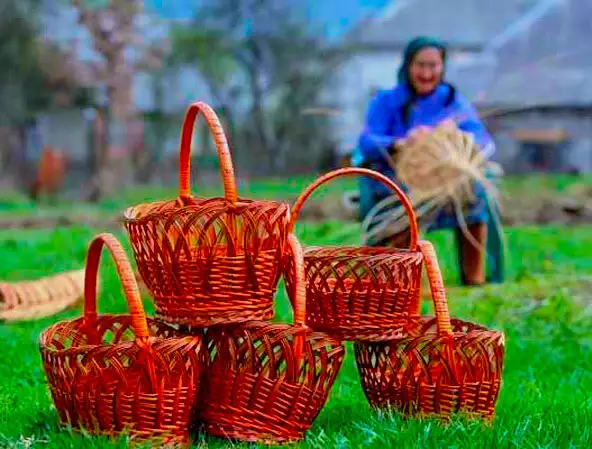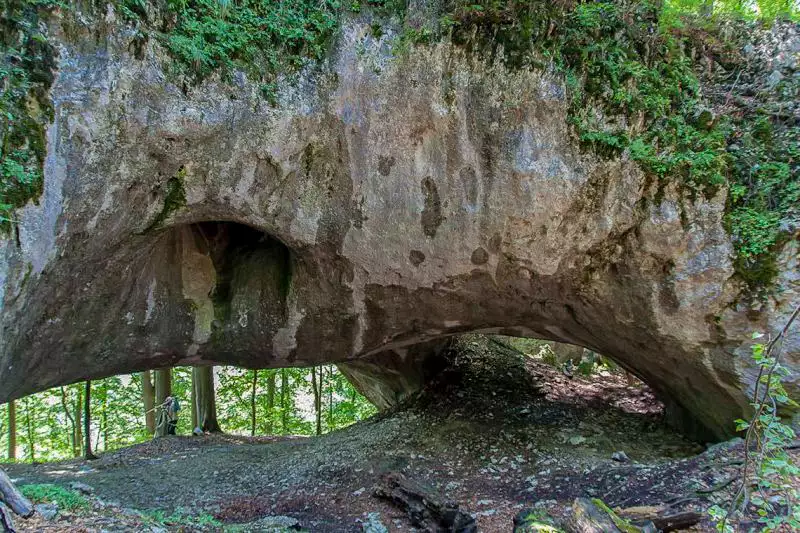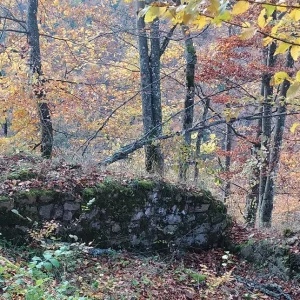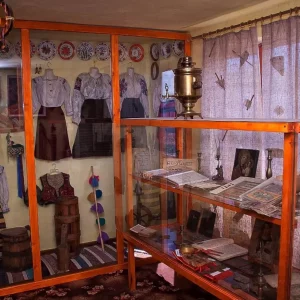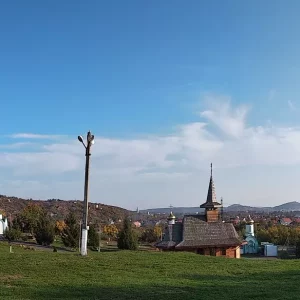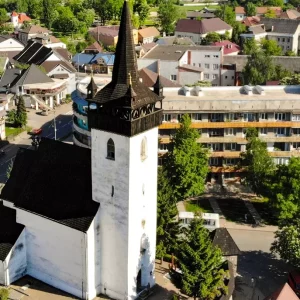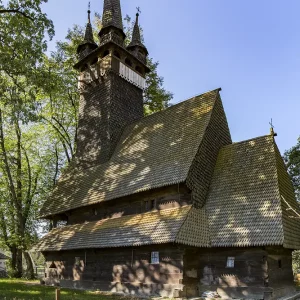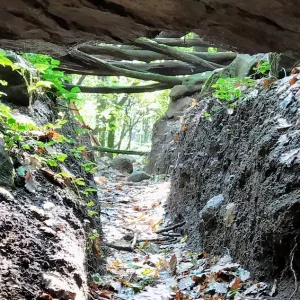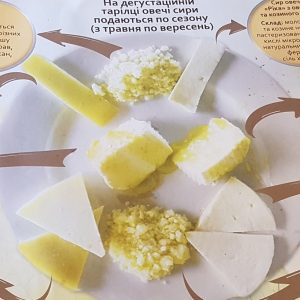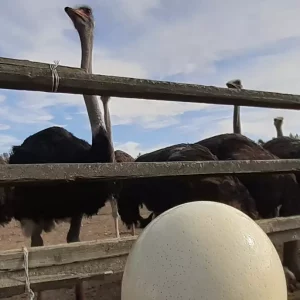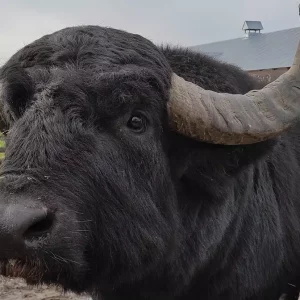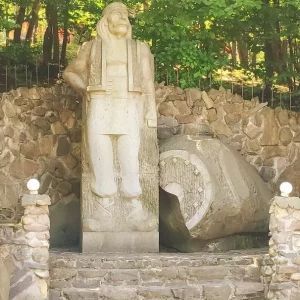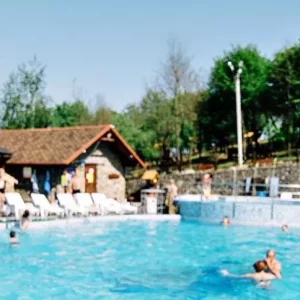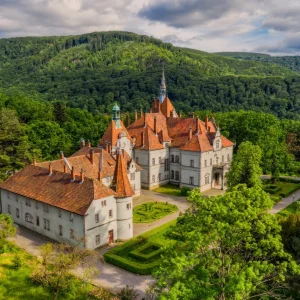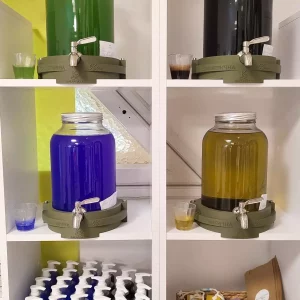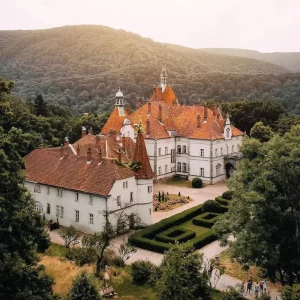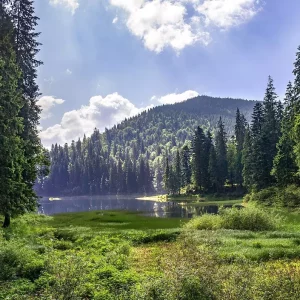A tour of Khust sights should begin with the church of St. Elizabeth, which is located at the intersection of Constitution and Karpatska Sich streets. The Reformed church of the 13th-14th centuries consists of three parts: an independent tower, a nave and an organically united apse. The walls of the temple are decorated with Gothic windows. During the restoration in 2005, interesting frescoes of the 15th century depicting knights in armor were found inside the temple. A similar church of the 13th-14th centuries was preserved in the village of Vyshkovo, Khust district.
From the Elizaveta Church, it is worth walking along Karpatska Sich Street in the direction of the Roman Catholic Church of St. Anna, which is located at the intersection with Koryatovycha Street. At the end of the 18th century, building materials from the Khust castle destroyed by fire were used for its construction.
Without changing the direction, you should walk a few more meters and turn left, continuing your walk along Repina Street. This is a kind of passage, on both sides of which there are counters of street vendors, showcases of cafes and small shops. The variety of colors and the turbulent flow of pedestrians create a feeling of the East. It grows when you go to Independence Square, which has been transformed into a city bazaar. The oriental flavor of the market is given by the golden domes of the Orthodox church.
Turn left on the square and after a few meters you can see the building Kabbalistic synagogues.At the beginning of the 20th century, a large Jewish community lived in the city. In the spring of 1944, when the fascists took Jews to concentration camps, they brought their spiritual literature to be stored in the synagogue building. Several hundred Jews who were lucky enough to survive and return home took their books back. After Khrushchev’s “thaw”, emigrating, they and their children again brought Talmuds to the synagogue, where the books are still kept. The Khust Synagogue impresses with its wealth, excellent condition of interior decoration, ornaments and furniture. In Soviet times, the building remained untouched. Fortunately, it was never converted into a warehouse or a gym in those days. This synagogue is active, it resumed its activities in 2000.
Nearby is the so-called Czech quarter, which was built at the beginning of the 20th century by Czech colonists. It consists of elegant houses with roofs covered with red tiles.
From the synagogue, the tour should continue in the same direction to the intersection, where you should turn left onto Constitution Street. At the end of it, you can see the already familiar Reformed church. From its walls, you should turn right, cross the road, and then walk along the street of the 900th anniversary of Khusta in the direction of Zamkova Gora. At the intersection with Pirogov Street, you can see the building of the City Council. It was in this building that the independence of Carpathian Ukraine was proclaimed in March 1939.
Further on, you should cross the Khustets River, after which you can start climbing to the left along the paved road through the city cemetery, to the walls of the Khust castle. After enjoying the panorama of the city and the views of the Rika and Tisza river valleys from the observation deck on the top of the mountain, you can go down the same road to the city. The ascent to the Castle Hill and the descent from it will take no more than an hour. The height difference is about 150 meters. The entire walk around the city will last a maximum of two hours.
